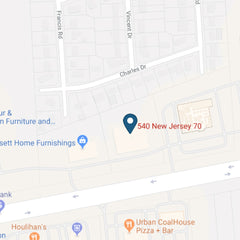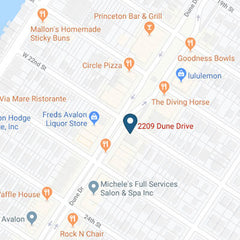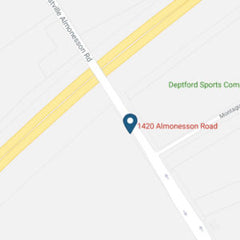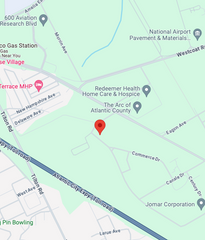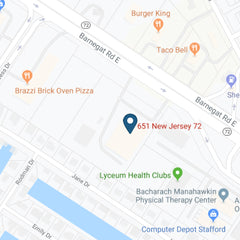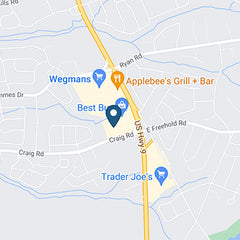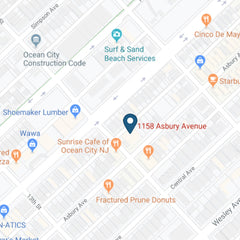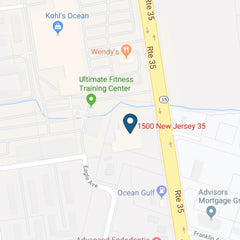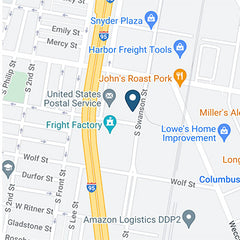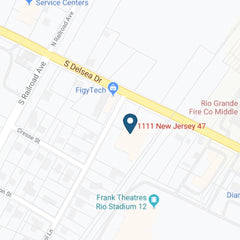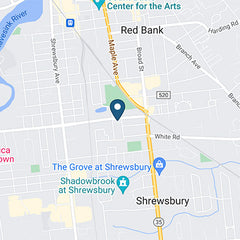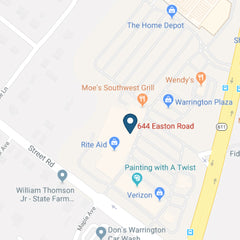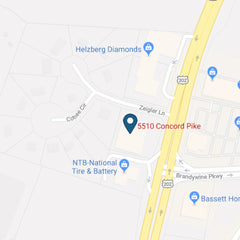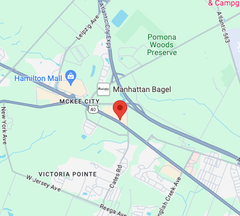You want the look of hardwood but don't have the budget. Get ready for a great solution: Laminate flooring.
Laminate flooring has gone big-time and is now a staple in many homes. Modern laminate flooring looks better, performs better and feels better underfoot than ever before. It's even being found as a type of premium flooring in high-end homes. All of this popularity and limelight of course brings up the question: What is laminate flooring?
The Basics and Structure of Laminate Flooring

Laminate is a synthetic multi-layer floor that's fused together in a lamination process (hence the name). Not only are the layers important, but it's often manufactured to replicate the look of hardwood and even stone surfaces, but we'll get into that benefit later. Let's start with the different layers of laminate!
Wear Layer: This is the top layer of laminate. It's an invisible surface that rests over the material and helps protect against scratches and other damage. This layer is usually made from an aluminum oxide chemical treatment.
Design Layer: This is the surface that gives laminate its actual appearance. It's created when an image or pattern is printed on paper like materials that are embedded in resin.
Inner Core: This is the heart of the flooring. It provides the depth, structure and stability of the actual surface covering. It's generally comprised of wood chips or sawdust that's ground into a very fine powder, then coated with resin and pressed into flat sheets.
Backing: This last part is a moisture barrier that protects the floor from warping.
History of Laminate Flooring
Laminate got its start in the early 1920's when the process of lamination was first developed. Originally it wasn't strong enough for flooring, so it was used for counters and backsplashes. But overtime, the innovations in the manufacturing process helped refine the finished product and made it increasingly durable.
The first laminate flooring was invented by a Swedish company named Perstop in 1977. And then in 1984, they began marketing it in Europe under the name we're all familiar with, "Pergo."
During the years 1996 and 1997, glue-less interlocking laminate flooring was also invented by two separate companies at the same time in Europe (a Swedish company called Väling Aluminum and a Belgian company called Unilin). Today, after many legal issues between the companies, almost all interlocking laminate floors are sold by one of the two corporations, or even a combination of both. Väling Innovation calls theirs Alloc and Fiboloc, and Unilin calls theirs Quick-Step Flooring, another name we hear often.
Pros of Laminate Flooring
When it comes to the benefits of laminate flooring as a building material, just about everything you've read or heard about laminate is true. In fact, it'd be hard to find a flooring material with a larger upside than laminate. Here's a list of the benefits you'll enjoy if you install laminate floors in your home.
- Durable
Laminate flooring is very durable, more than hardwood, which makes it both pet-friendly and family-friendly and a great option for high-traffic areas. To add to this advantage, it can also withstand exposure to sunlight for a long period of time and not fade. The word durable now seems like an understatement.
- Easier to Clean
Need another reason to love laminate flooring? Good because we have one—it's easy to clean! There are no special instructions or materials needed for maintenance. Dust and spills can easily be eliminated with a vacuum, broom or even a slightly damp mop. Isn't that so easy? With this simple maintenance, you'll get many long years of beautiful laminate flooring!
- Appearance
In the past, it was easy to tell that laminate was artificial wood. But today, with technological advances, it's now difficult to tell the difference between laminate and hardwood. This makes it a great option for anyone who wants the look (and even feel) of hardwood and other natural materials (even stone) but without the hard and tedious work.
- It's Cheaper Than Wood
That's right! Laminate wood flooring can look and feel like the real material, but without the high price. This makes it perfect for the budget-conscious homeowner. We could all go for an option that'll save us some money, right?
- Easy Installation
Another advantage of laminate flooring is that it's pretty much the easiest flooring to install for the typical DIYer. A lot of that is due to the fact that laminate forms a floating floor, meaning it doesn't have to be nailed, stapled or glued to a subfloor. The other reason laminate is so easy to install has to do with how the planks attach together.
While it's great for a DIY project, it's also of course worth being safe and spending a few extra bucks to get it installed correctly by a professional.
Cons of Laminate Flooring
And just like any material, there are also some disadvantages. But don't worry, there aren't many.
- Moisture Damage
At its core, laminate flooring is made from a composite material called high density fiberboard (HDF), which is more susceptible to water damage than natural wood. Once HDF is exposed directly to standing water, it breaks down and expands. One that happens, a laminate floor is compromised and will have to be replaced. That limits the areas where laminate can be installed, ruling out places like bathrooms where regular exposure to water is commonplace.
Laminate's glossy top layer makes it resistant to spills, but it's not recommended for wet areas like bathrooms. If water stands on the floor and is able to soak between the planks, it can cause the floor to swell and the layers to peel apart.
Critics of laminate flooring argue that while this flooring type can be used in areas where moisture is present, it can fail with heavy moisture. Moreover, it cannot withstand too much water exposure and standing water like in a flooded basement or kitchen. If laminate flooring is soaked in water for a long time, it can expand and break down. Therefore, it will need to be replaced.
- Can't Be Refinished
Hardwood can be refinished many times to keep it looking fresh and new. Laminate flooring is the opposite. Unfortunately, since it has the fiberboard core and thin wood-look (or stone-look) layer on top, you don't have the option of refinishing it. Because once that thin layer gets worn out, the whole floor will have to be replaced.
Now you can see why laminate flooring continues to grow in popularity throughout American homes today—it's durable, easy to clean and maintain, has authentic hardwood aesthetic, not super expensive and DIY-friendly.
Does this make you ready to add laminate to your home? Then make sure you stop by one of our locations to pick out the perfect laminate flooring for you!


